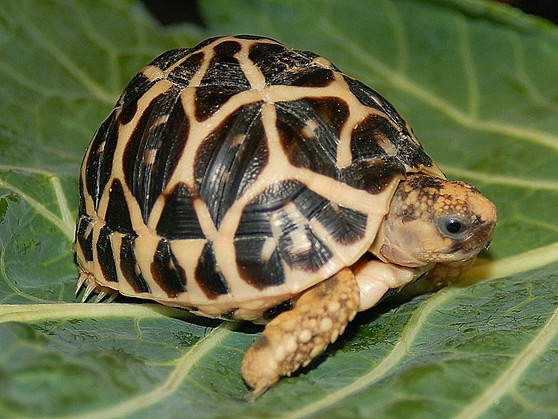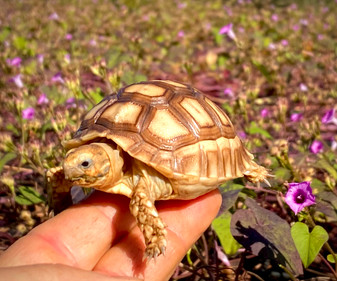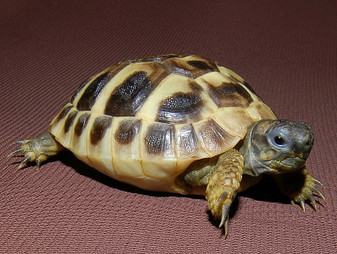Product Description
Indian Star Tortoises are at very the top of tortoise keeping the world over. The stunning beauty of their radiating star patterns is best understood by placing one in tall grass. Their unique pattern viewed through sunlit flowing grass renders them almost perfectly camouflaged.
Found through out much of the Indian sub-continent and Sri Lanka, this species has developed three geographic variations: Indian Star Tortoises from the north tend to be larger with darker coloration. Indian Star Tortoises from the south are smaller with more brilliantly contrasting patterns, and Indian Star Tortoises found in Sri Lanka are as bright as the southern form, (sometimes with even more yellow) and grow as large as the northern form.
Getting their specific diet right is a critical component of successfully keeping Star Tortoises. It must be high in fiber and carbohydrates that are easily digested - and low in sugars (no fruits). This is accomplished by feeding mostly dark leafy greens, lots of grasses, cactus pads, even grape and mulberry leaves. Flowers like hibiscus, petunias and dandelions are all very good for Indian Star Tortoises.Wetfoods like tomatoes, and proteins must be avoided. Indain Star Tortoises are a dry species and should never have a water bowl. Constant access to greens and short, shallow soakings (3 times a week for hatchlings, twice a week for yearlings and two year olds, and once each week for adults) is their source of hydration. Calcium supplements, with vitamin D3, are a must for all stars, especially for juveniles and breeding females. Care must be taken to make sure that sand cannot be eaten with their food. A sand- free enclosure, or section of their set up for feeding, is best to avoid serious impactions.
Indian Star Tortoises (Geochelone Elegans) are sexually dimorphic, meaning that the females grow much larger (up to 12 inches) than the males (about 8 inches). They do very well in groups, but Star tortoises are susceptible to problems caused by exposure to pathogens carried by other species of tortoises; and housing separate from other species is crucial.
Actually close cousins of Leopard Tortoises, Indian Stars Tortoises are found in deserts, savanna grasslands and forests. All their habitats are very dry and warm except during summer monsoon season. Indian Star Tortoises will not do well in even moderately humid and cool environments. They need to be kept in the low to mid 80s with basking areas around 95 degrees f. We soak our juveniles every third day in less than an inch of warm water. In order for Star Tortoises to metabolize calcium, Vitamin D 3 must be synthesized - providing a UVB basking bulb will accomplish this. Their enclosure should also include a dark hide box, far from the basking area to provide a full range of temperature options. In warmer dry months, protected outdoor pens that provide both sun and shade will contribute greatly to the Star Tortoise's good health.
Our Star Tortoises are produced from a breeding colony of very large, brightly colored adults. With their classic high domed shells and spectacular patterns, keeping these amazing creatures is well worth the keeper's extra attention to detail.
Pictured are ten month old 2.5 inch Indian Star tortoises
Also available are 1.75 - 2 inch, five month old Indain Star Tortoises from the same parents as our 10 month olds.









